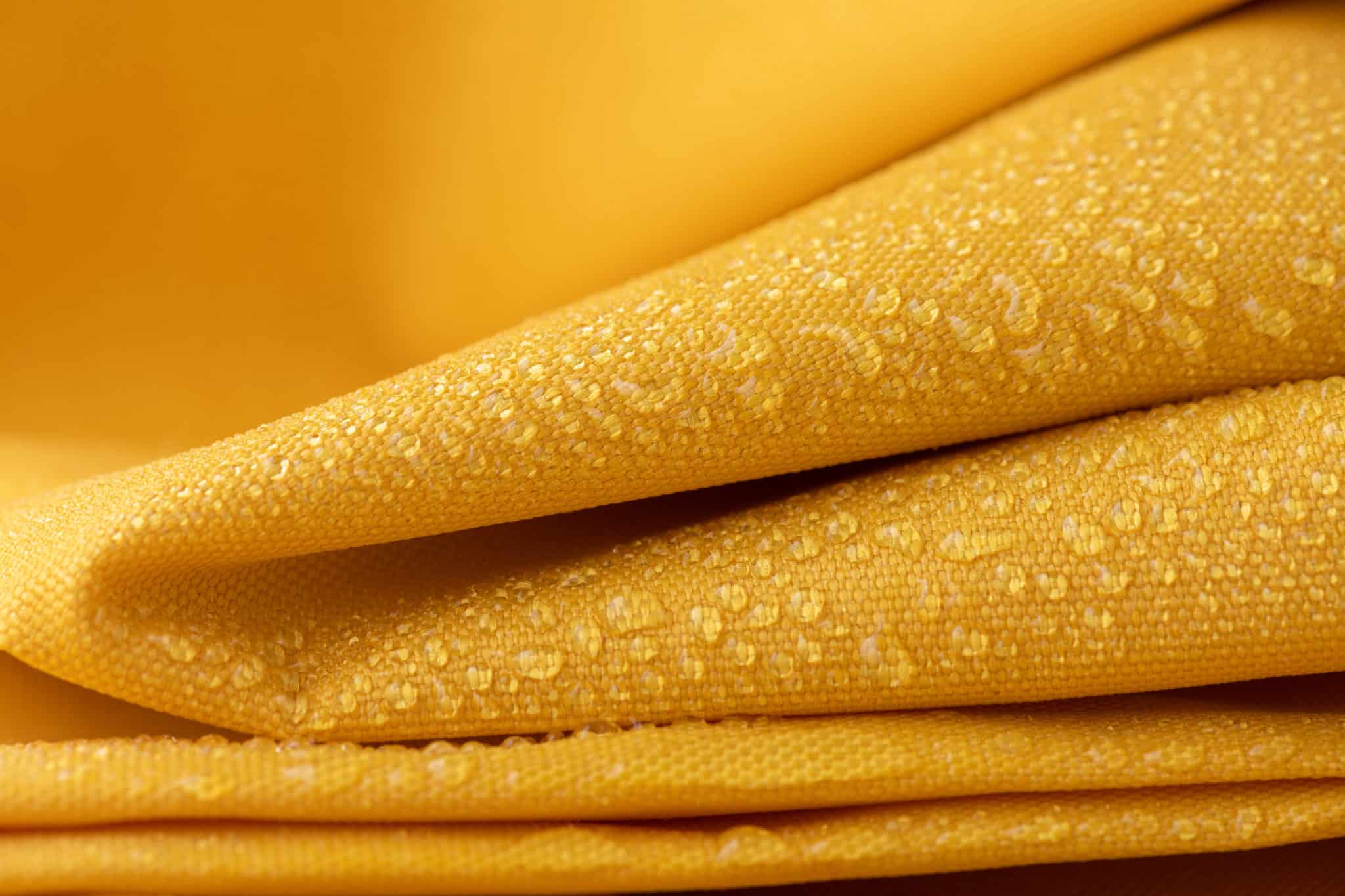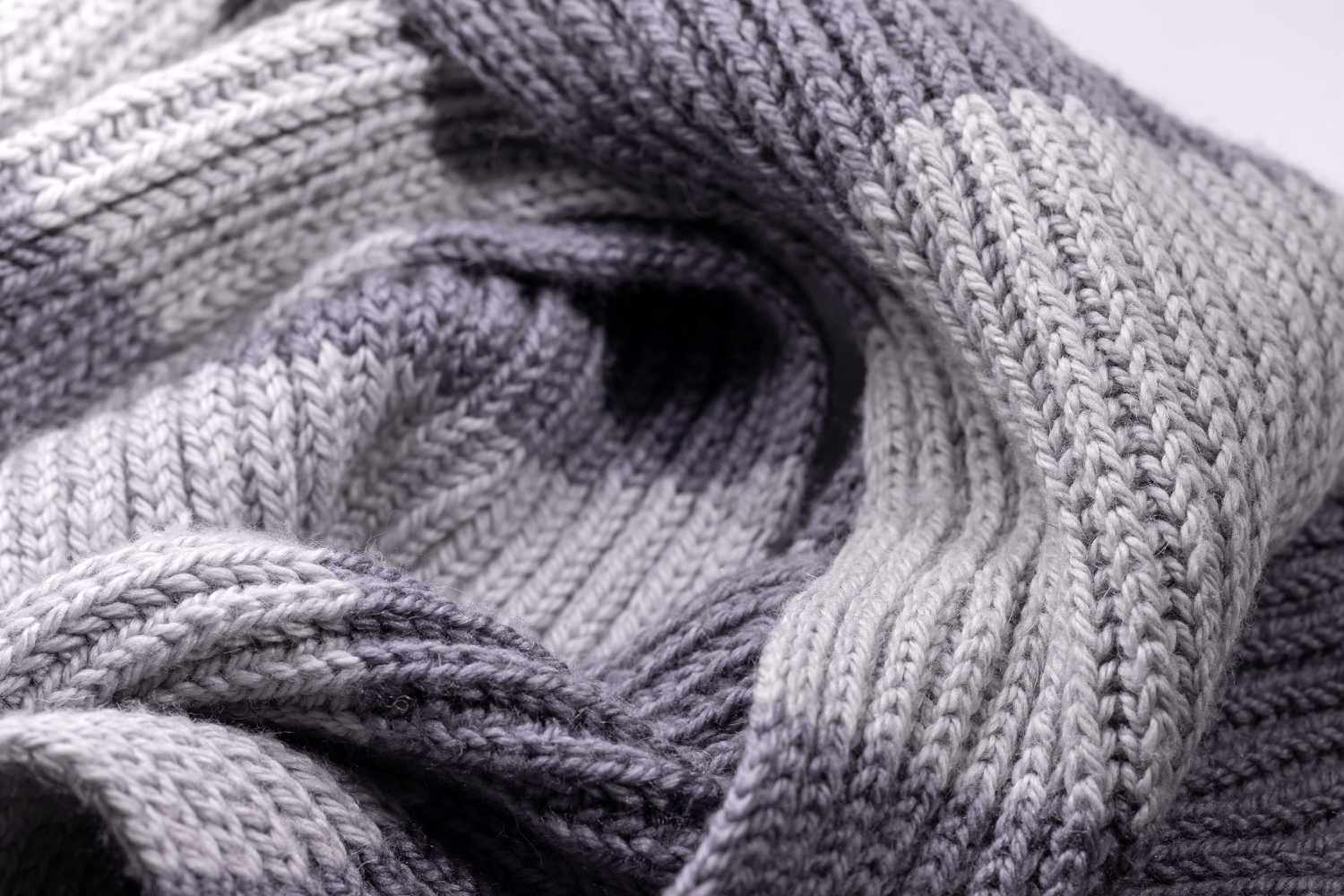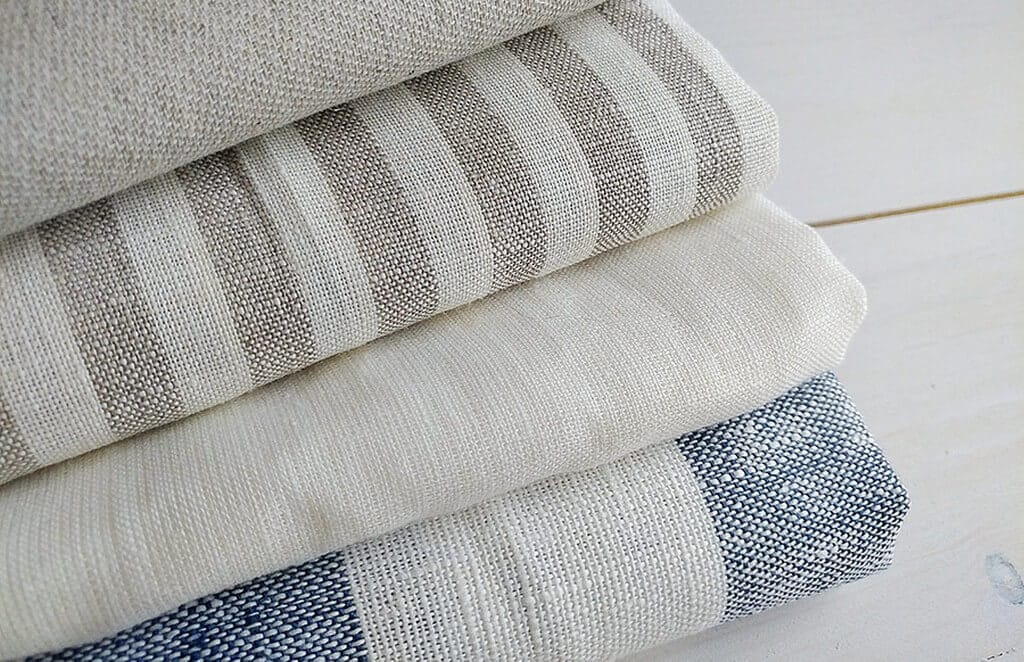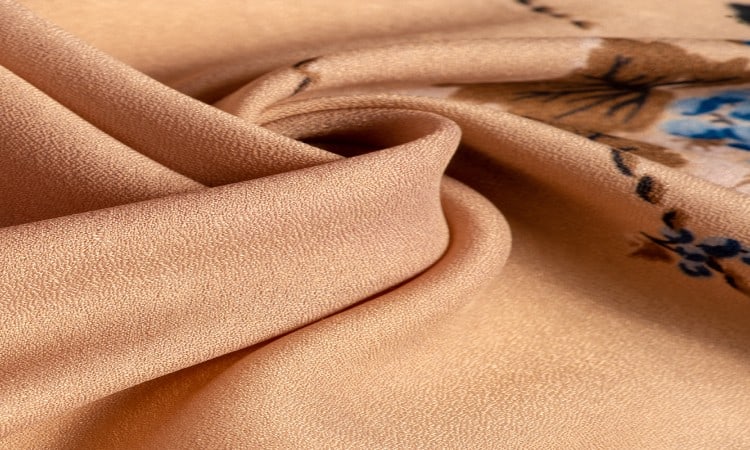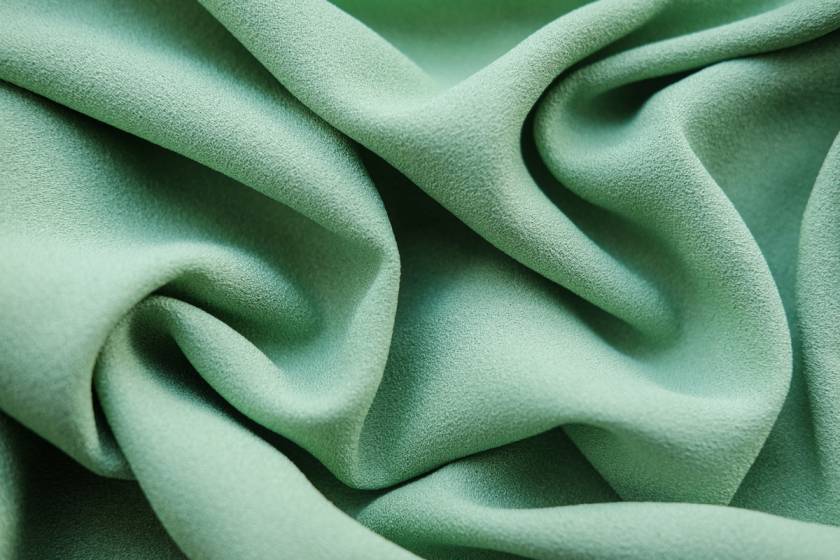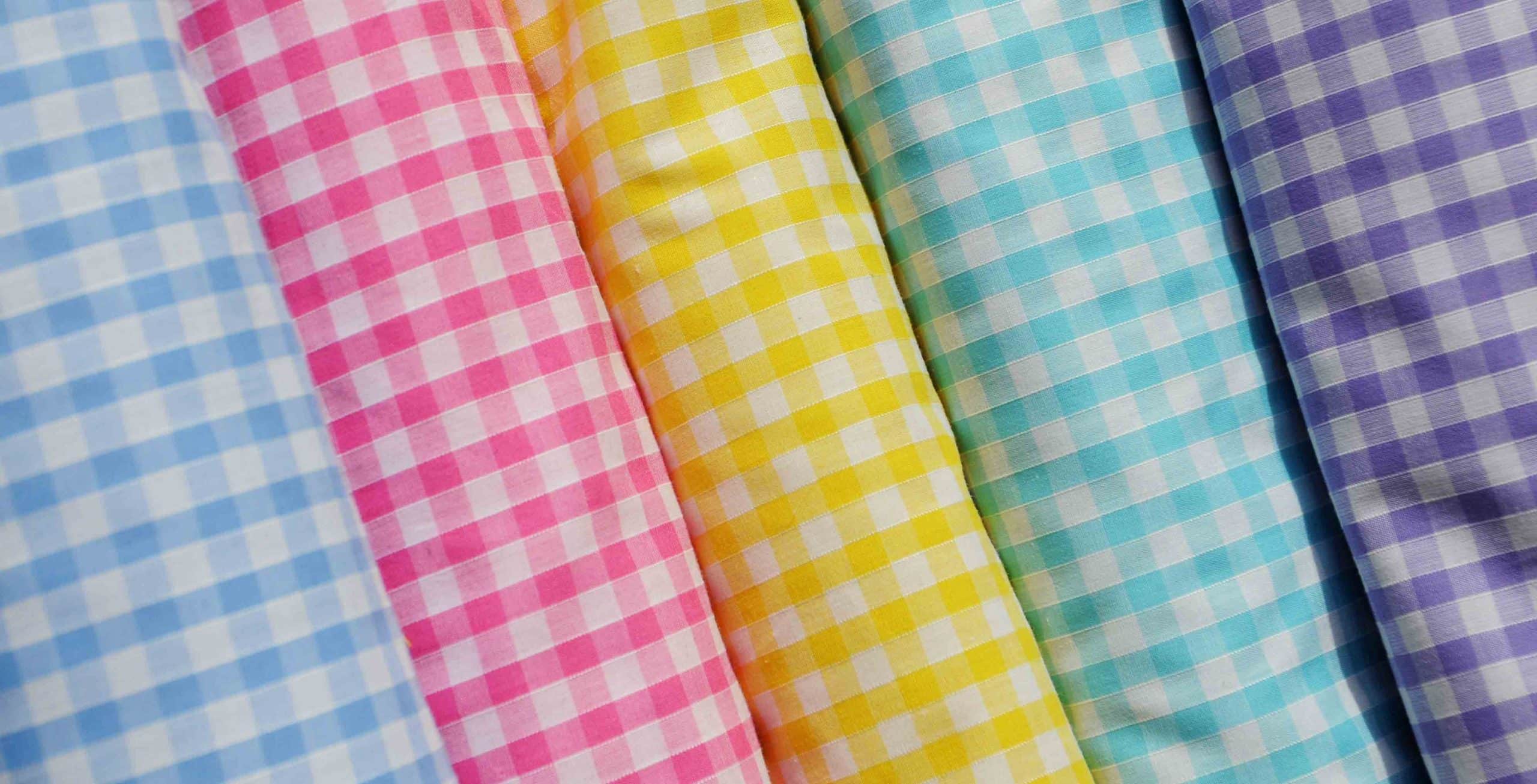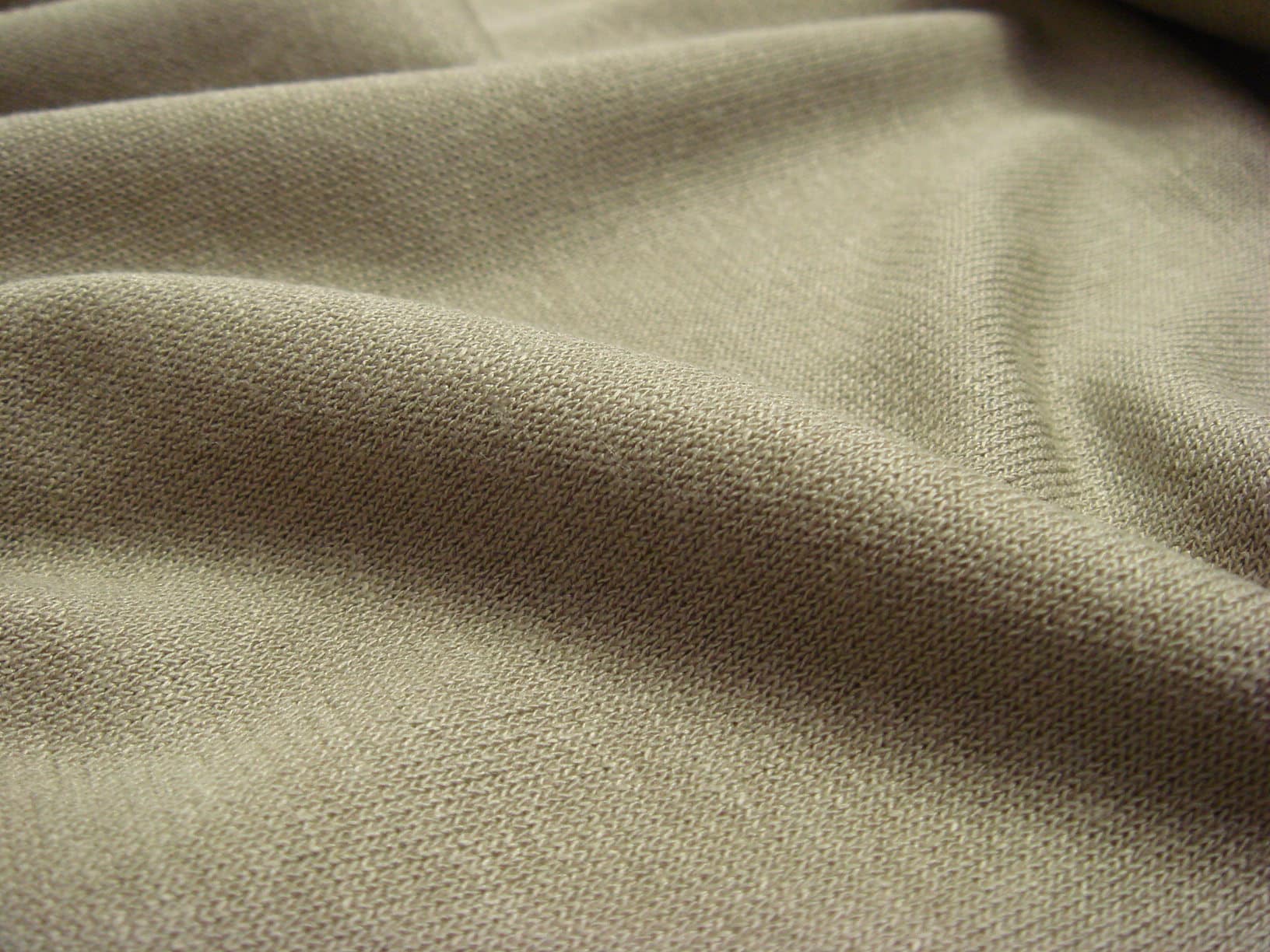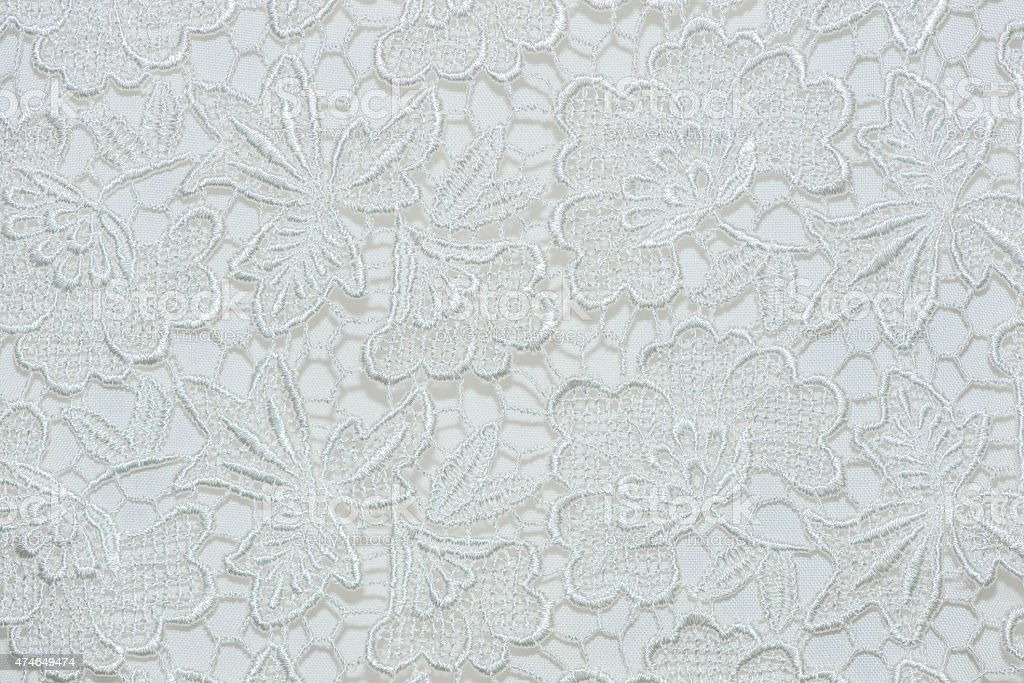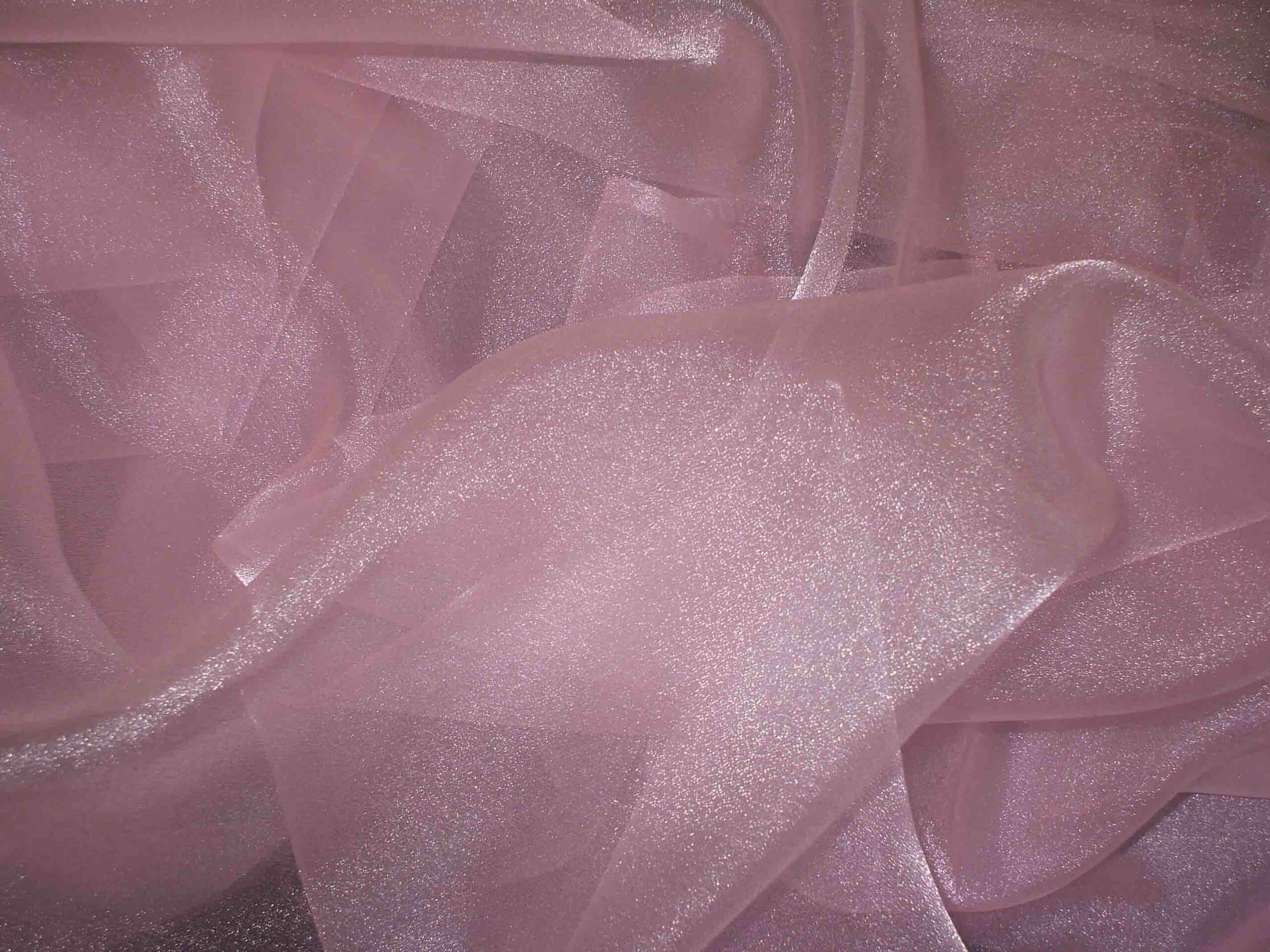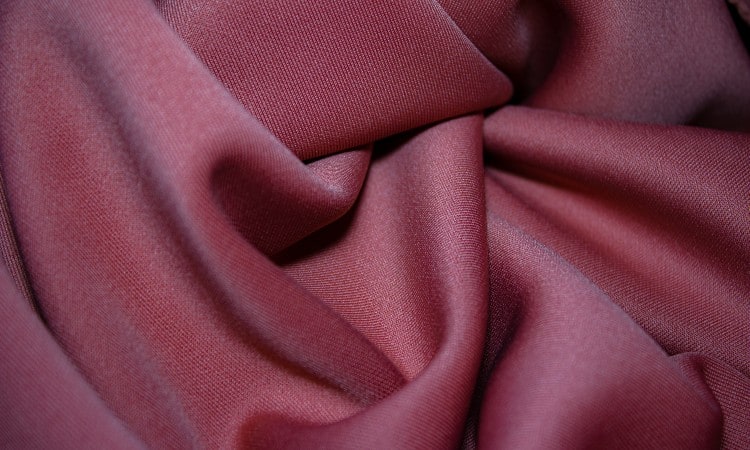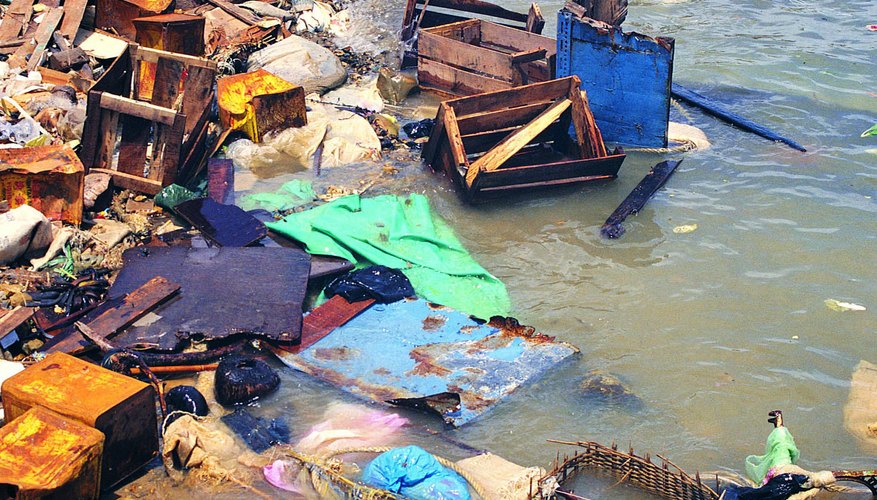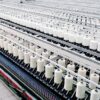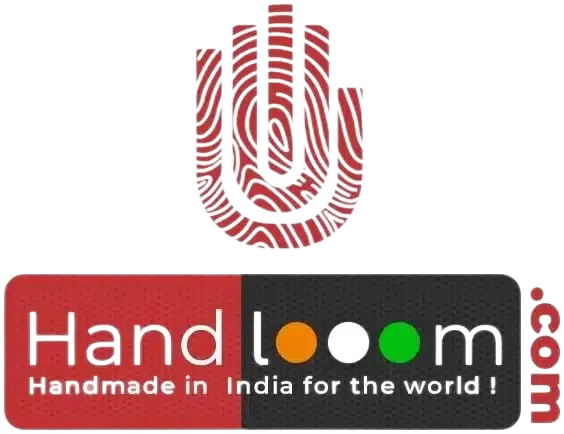Learn about the fabrics you wear and how they impact your environment and your health.
What makes a fabric sustainable? How do you know if fabric is sustainable really? Well, first let’s touch on what makes an unsustainable clothing fabric.
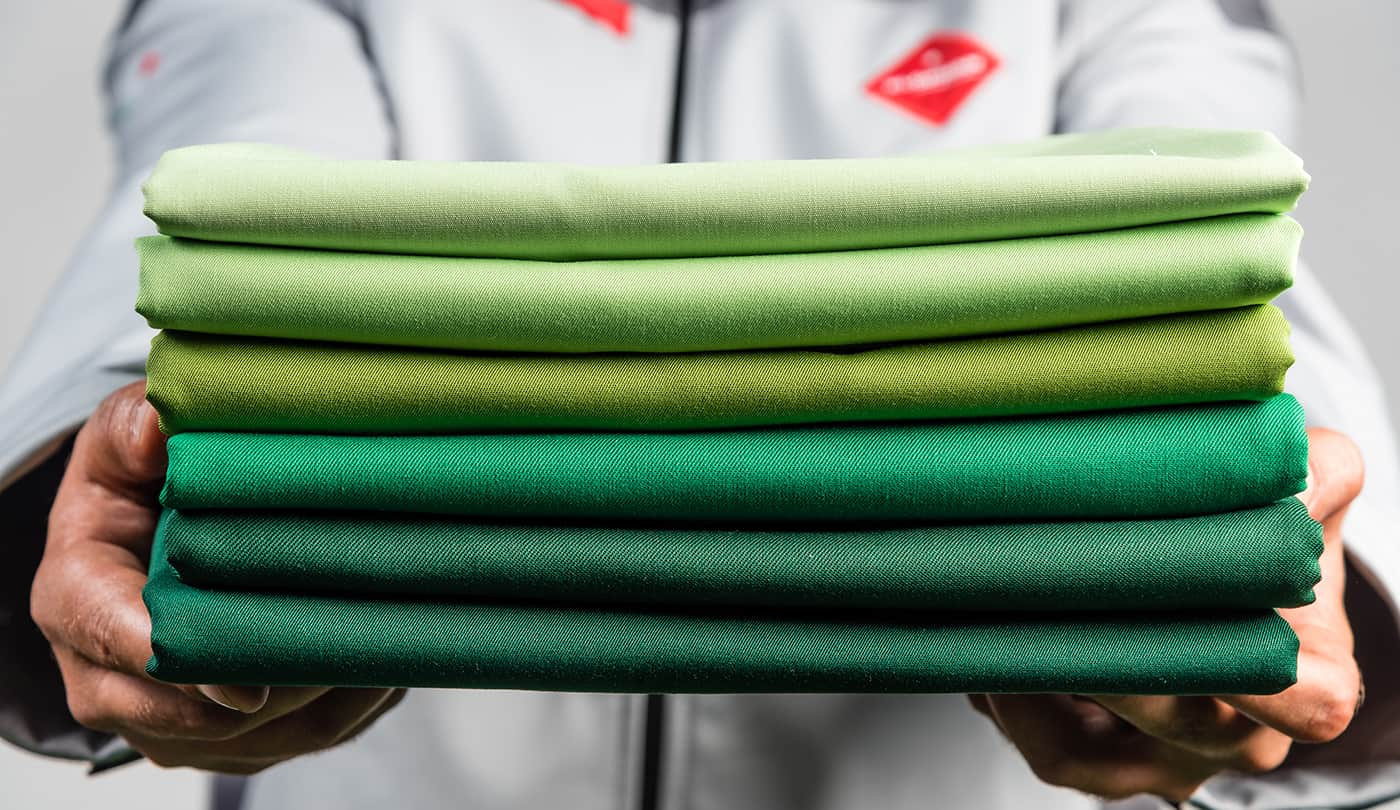
Conventional fabrics used in fashion and home goods—i.e. Polyester, Nylon, viscose fabric, Acrylic among many others—have historically been developed with profit (not planet) in mind, entailing:
- Environmentally devastating sourcing of raw materials (unsustainable farming, deforestation, and petroleum drilling)
- Chemically-intensively material processing (plasticizing, bleaching, softening, and dyeing)
- Poor end-of-life prospects (ways a garment can be disposed of) leading to tremendous amounts of textile waste—to the tune of almost 15 million tons per year in the US alone.
With that in mind, the Sustainable Jungle sustainable fabrics definition is this:
Textiles that significantly minimizes the impact of its conventional alternatives, whether through organic and chemical-free farming, use of recycled materials, circular manufacturing processes, and sustainable prospects for end-of-life disposal.
Let us explain you why we don’t use these fabrics mentioned below with the reasons.
Polyester
Polyester is Dangerous and Bad For Your Health. Skin exposure to Polyester can cause rashes, itching, redness, eczema, dermatitis, blistering or make existing skin problems worse for those with sensitive skin, up to 3 days later. Heat releases Polyester chemicals like Antimony oxide Sb2O3, which is used to make Polyester and is a known carcinogen. ( Carcinogens are substances or exposures that can cause cancer)
Nylon
Nylon is also not a good fabric for you to wear either. Nylon does not absorb moisture so sweat is trapped against your skin, which creates a breeding ground for odor and fungal infection. During thermal processing caprolactam monomer contained in the fiber can be released. Caprolactam can irritate the eyes, nose, throat, and skin at sufficiently high concentrations. Some people who are sensitive to materials made from petroleum may react to nylon.
Acrylic
Synthetic acrylic fiber endangers your health. Acrylic fabric is hazardous to your health. The main component of acrylic fiber is acrylonitrile, a carcinogen and a mutagen that targets the central nervous system, with similar effects to cyanide. As early as 1979, the U.S. Environmental Protection Agency (EPA) became concerned that residual monomers in acrylic fabric may be carcinogenic. Since acrylic fabric is not biodegradable, the environmental impact on the planet is immense. Acrylic fabrics can last in a landfill for up to 200 years!
Rayon
Rayon (also known as) Viscose is a man-made, synthetic fiber. To produce rayon, highly toxic solvents are applied to wood pulp to break it down into purified cellulose. The hazardous chemicals required — like carbon disulfide — pose serious health risks for factory workers, including potential damage to reproductive and nervous systems. Carbon disulfide in particular can cause reproductive harm and damage to the nervous system (carbon-disulfide-based viscose is no longer made within the U.S.).
What should you avoid if you have sensitive skin? Polyester, acrylics, rayon and nylon are common fibers that can have a negative impact on people with skin conditions. These fibers are hydrophobic and tend to trap moisture which can irritate your skin.
Bamboo
Bamboo clothing is generally toxic as its production demands the usage of chemicals such as carbon disulfide, sulfuric acid, ammonia, acetone, or caustic soda. These highly hazardous substances harm the environment and put human health at risk. When it’s processed into fabric that’s advertised as “soft,” “silky,” or “cool to the touch,” it has likely been turned into rayon or viscose using toxic chemicals.
Chiffon
Although the fabric is lightweight and durable, it also presents several disadvantages. The fabric is slippery, stains easily, and requires special handling to maintain its silky, supple quality. Some chiffon fabric is made from rayon, however, and this substance is significantly harmful to the environment & health.
Crepe
The crepe as a fabric is not suitable for summer usage. Even though it is light clothing, it is a bad idea to wear it in summer. Crepe lends its properties to make winter clothes and clothing accessories. Crepe is a flammable fabric, especially silk crepe has low heat resistance. Crepe is a type of crinkle-textured fabric that can be made from natural or synthetic fibers.
Georgette
Georgette is a type of crêpe fabric that is typically made from pure silk but can also be made from synthetic fibers like rayon, viscose, and polyester. Silk georgette is 100% pure silk fabric and is 43/44″ wide. Georgette fabric is very similar to chiffon in both drape and feel, but tends to be slightly heavier. Silk yarns make genuine Georgette, whereas Rayon and Polyester yarns make faux Georgette. If you are sure that 100% natural fiber is used to weave Georgette, you can use it as it is safe for your health.
Gingham
Gingham is a lightweight, yarn-dyed woven fabric typically made from cotton or a cotton and synthetic blend. It has a long history in the fabric and textile industry, originally made completely of cotton fibres but later also of man-made fibers. So, if you are going to have Gingham fabric, make sure that it is made of 100% cotton fibers.
Jersey
As well as much more durable than the original wool. The unfortunate downside to these modern jersey knits is that these materials don’t allow for proper airflow and proper moisture evaporation. Synthetic fabrics also house many toxic chemicals, making them not only bad for the environment but also for our health. Disadvantages of Jersey Fabric are as follows– 1..It is not durable. 2.. Sticks to your body, doesn’t allow your skin to breathe easily, and is sensitive to heat.
Lace
- Lace fabric clothing after wearing for a long time easy to deformation, not easy to maintain.
- Lace is also easy to pilling, which is unavoidable.
- If it is with poor quality lace clothing, easy to scratch the skin after wearing.
- Silk fabric hooks easy to break, it is best to hand wash
The environmental impact of lace production varies depending on the type of fabric used. Silk production, for instance, is remarkably environmentally friendly, while at the other end of the spectrum, non-biodegradable synthetic lace contributes to plastic and toxic chemical pollution.
Modal
Modal requires many toxic chemicals such as sodium hydroxide, sulfuric acid, and carbon disulfide. The latter is a well-known neurotoxin that can enter the water or air through the processing of modal if it’s not manufactured in a closed-loop process. Many people react adversely to Modal Fabric. It is proven to cause allergic reactions such as itching, rashes, redness, and in some extreme cases, skin blistering. Forest Destruction: Unless from Lenzing, there’s usually no guarantee that the pulp used to make modal clothes come from renewable forests.
Organza
Organza production is oftentimes unethical and unsustainable. It creates waste, pollution, and carbon emissions. It involves the use of toxic chemicals that put ecosystems and human health at risk. When organza is made from silk, it’s an animal-derived product. The material can also be made from synthetic fibers, primarily polyester and nylon. Synthetic fabrics are slightly more durable, but the fabric is very delicate and prone to frays and tears. So, if you are going for Organza make sure it is made of natural fibers.
While organza does offer several advantages, it’s important to consider its disadvantages before using it as part of your designs.
- Organza needs to be dry-cleaned or washed by hand, and cannot simply go through the washer.
- Perspiration may stain and ruin organza.
- Organza does not drape well, so it often appears in long folds.
- It is very transparent, which means that you may need to use it over another fabric or use a lining in order to get the right look.
Satin
The Hidden Toxins in Satin: Why You Need to Know What it’s Made Of. You may have heard about the benefits of sleeping on a satin pillowcase, but did you know that satin isn’t equal to silk? In fact, many satin products on the market contain hidden toxins that could be harmful to your health. Satin is artificial. Usually, polyester, rayon, or nylon fibers are used to weave the threads into a “satin weave.” The result is a seemingly luxurious shiny fabric, though it does not have the same benefits as silk.
Satin is also made to be affordable, but it’s only creating the illusion of being a luxurious fabric. It is made with synthetic fibers that create the appearance of a lustrous surface, but those fibers aren’t natural or, in some cases, safe. So, while you might think that silk and satin are comparable, the truth is that they’re nothing alike.
There are all kinds of chemicals that can be found in satin depending on the specific finish on the material. You could find toxins such as:
- Formaldehyde
- Azo dyes (some which are associated with cancer)
- Heavy metals like cadmium or mercury
- Organotin compounds
- Chlorobenzenes
Spandex or Lycra or elastane
Long-lasting contact with polyurethane can cause asthma reactions and lung irritation. Other risks include headaches and brain swelling because of the chemicals embedded in the fabric. Spandex material is not a breathable fabric and traps moisture, sweat, bad odor within the garment which may lead to skin infection. Elastane is a synthetic fiber that is known for its high elasticity and strength, making it a popular additive to fabrics used for close fitting garments. While it isn’t toxic to wear, anyone with skin sensitivities to petroleum products should consider avoiding it.
Velvet
Velvet can be woven from any type of yarn. While in the past it was traditionally woven from silk, today cheaper materials are commonly used alone or in combination, such as cotton, linen, wool, or synthetic fibres. So, if you are going for velvet, please make sure it is made of natural fibers only and not have any synthetic fibers mixed with it.
Conclusion
The chemicals hidden in man-made fabrics not only harm consumers but also garment workers. Those working in manufacturing and textile mills get ingest hazardous chemicals like solvents, flame retardants, and fixatives on a regular basis.
Synthetic textile fibres are produced from fossil fuel resources, such as oil and natural gas. Their production, consumption and related waste handling generate greenhouse gas emissions, use non-renewable resources and can release microplastics.
- Synthetic fibres do not absorb water or sweat.
- Synthetic fibres melt and burn easily.
- Synthetic fibres on catching fire shrink forming beads which stick to the skin. …
- Synthetic fibres are nonbiodegradable.
-
Most fabric used in “Fast Fashion” is made from petroleum. Synthetic fabrics such as Polyester, Acrylic, Nylon, Spandex and Acetate are all made from non-renewable fossil fuels. The production of these synthetic fabrics is emission-intensive and environmentally degrading.
-
They catch fire very easily, will burn away in no time, mostly synthetic fibre shrink when they come in contact with flame.
-
We cant exclusively use only man-made fibre because man-made fibre does not allow air to pass through does making the Fabric very hot.
This is the category that holds the majority of the skin-harming culprits. Man-made fabrics like acrylic, polyester, rayon, acetate, and nylon are treated with thousands of harmful toxic chemicals during production. Clothing that contains synthetic materials such as polyester and nylon contributes to microplastic pollution, which can end up in the ocean and the seafood that humans eat.
The non-biodegradable nature of synthetic polymers makes them a permanent waste. The used polymeric products like plastic bags and bottles cannot be dumped in sanitary landfills. These synthetic waste items are then combust in the incinerators which results in release of harmful gases and cause air pollution.
Shopping for eco-friendly clothing can be a challenge, but if you take the time to do your research, it can be a rewarding experience. Start by looking for trusted brands that use natural fibers and avoid synthetic fibers. Handlooom.com is a great resource for handmade clothing that is 100% natural and eco-friendly. Trust in this brand and you won’t be disappointed. Taking the time to find the right clothing is worth it when it comes to protecting the environment.



